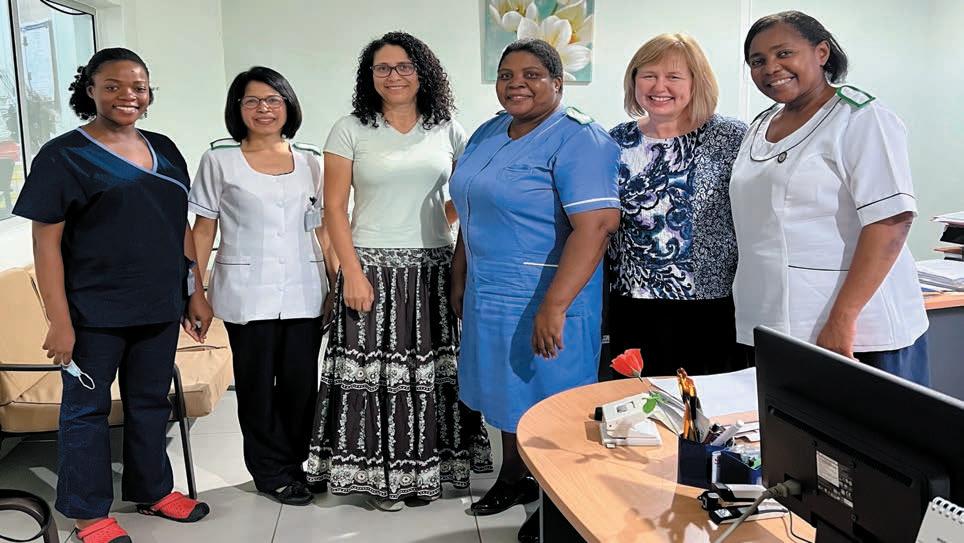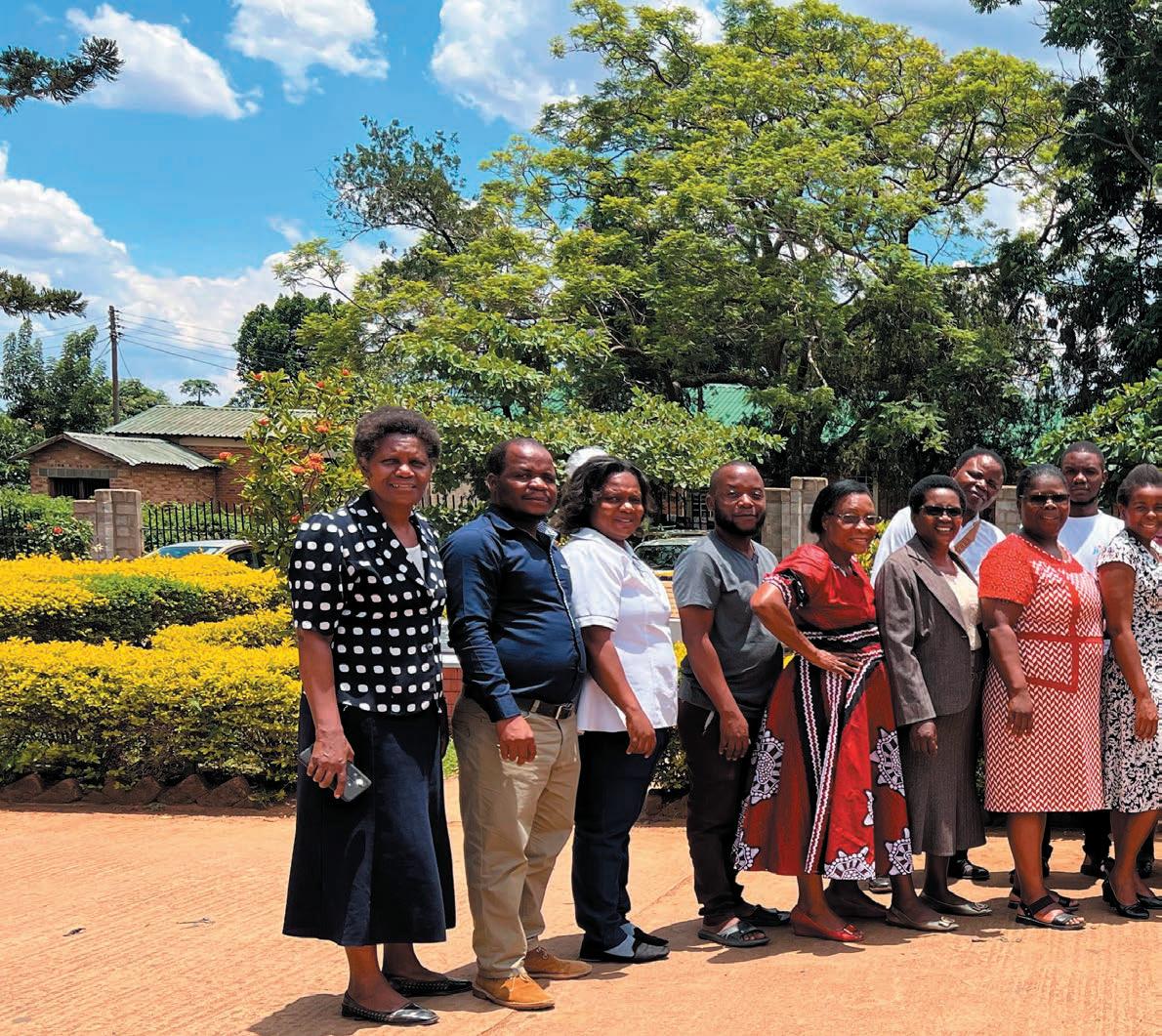
3 minute read
The Value of Nursing Leadership


Advertisement





by Qualyn Robinson
Many global SDA nurses struggled with the requirement to attend classes and complete exams on Saturdays at their national universities, along with a general lack of access to higher education. The off-campus master’s degree program provided an opportunity for a learning environment that cultivated our global SDA nurses’ organizational, clinical, and spiritual growth.
The School of Nursing launched its fifth cohort in 2020, with 46 nurses accepted into the program – the largest cohort yet. Jan M. Nick, PhD, RN, Director, along with Anne Berit Peterson, PhD, RN and Dolores Wright, PhD, RN are the current leaders of the program. Starting during the height of the COVID-19 pandemic, the program was largely online and certainly not free of challenges.
“Many institutions struggled with stable internet,” says Nick. “We had three students in Cameroon without internet on campus for three days, making online classes very difficult. We also tried electronic books, but that option did not result in a successful outcome either.”
Teachers had to adjust to overcome a lack of resources and the difficulty of teaching international classes through Zoom, including offering extra sessions, staying up late or waking up early to accommodate students in different time zones, and sending adequate computers to institutions with the help of committed donors that have been of great support since the off-campus program was established.
When we start class, we open with worship and prayer. Not only does this bond us as a group, but it also strengthens their faith, strengthening the institution.
I can only imagine a higher glory to God when these institutions provide excellent healthcare to their community.”
The off-campus master’s degree program is not the only initiative for building global nursing leadership. A collaboration between Adventist Health International and Kendu Adventist Hospital (KAH) began in 2021 after the nursing staff at KAH identified nursing inadequacies that limited the quality of healthcare that they could provide.

However, the efforts and adjustments of these teachers did not go unnoticed.
“It has just been so amazing to see how appreciative the students are and how much effort they put into the program,” says Nick. “Their efforts strengthen the Adventist church as much as it strengthens our hospitals or clinics.
A team of KAH, Loma Linda University School of Nursing representatives, and AHI personnel worked together to develop quality continuing education for the KAH nursing community. This initiative will be an online network for nurse educators and leaders among the diaspora to contribute videos and training to a broader community of global SDA nurses.
The program continues today with many other Adventist institutions looking to enrich their international partnerships and share their unique resources. For example, Blantyre Adventist Hospital (BAH) in Malawi lacked an oxygen plant until January 2023. Beforehand, nurses had to transport very heavy oxygen cylinders to their designated patients across the hospital despite the cylinders being dangerous to handle.

After a recent visit to BAH, Anne Berit Peterson, director of global nursing at LLUSN, described the joy amongst the nurses after the hospital invested and installed an oxygen plant. “They were dying to show me the plant and were just thrilled about how these investments will likely decrease any accidents and make a difference in the care of their patients. It’s tangential, but it’s an example of how nursing in our global institutions is impacted by the investments of AHI in infrastructure, supplies, equipment and more,” says Peterson.
Now, BAH has the ability to ship cylinders to sister institutions like Malamulo Adventist Hospital, allowing them to have a better oxygen supply than previously.
Through networking and initiatives, such as these, there is a newfound opportunity for our global clinics and hospitals to begin empower and support each other.

“We are creating and linking institutions with one another,” says Peterson. “My goal is to link nurses within the same regions together. Each region has its own standards that they must follow. The needs of an institution should be contextualized. They have needs that are similar and relevant to one another, and they understand and use each other as a sounding board to achieve their goals.”
According to the World Health Organization (WHO), 59% of healthcare is provided by nurses. “It is the nurses who are the ones in those small community clinics that are picking up where there’s a hole in the healthcare system,” says Nick. “So, nurses must be leaders, if they’re going to impact their community, institution, and church, and they need those advanced skills. They need knowledge of clinical content, but also knowledge of research and questioning, and then knowing where to go to find the answers in this new healthcare system. That is why nursing leadership is truly critical.”









